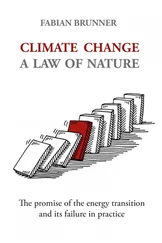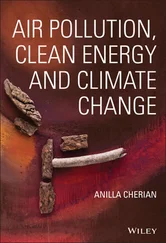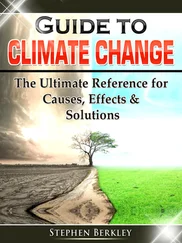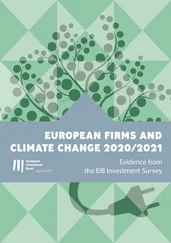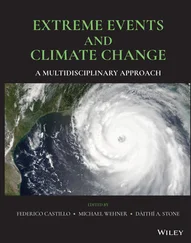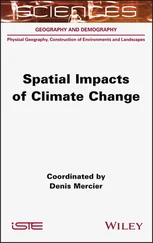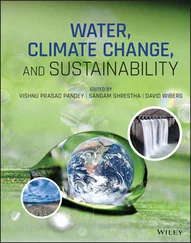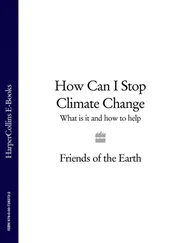Increased droughts in what are now semi-arid areas
Loss of food production from persistent drought
Dislocation of hundreds of millions of people due to climatic events with potential global political instability
Rapid Arctic ice melt
Fast loss of permafrost and the release of methane
Increased forest fires and wildfires
Shifting air circulation globally, such as collapsing polar vortex (a large long-lasting low-pressure area at both the north and south poles), increasing dangerous events from heat domes to extreme cold in southern latitudes
Increased damage to cities and major infrastructures because of higher-intensity storms and floods
Doubling the risk of multiple species extinctions
Figure 3-4 outlines the changes that different temperature increases, up to and beyond 3.6 F (2 degrees C), may bring. For more on the consequences of global warming and other climate changes, check out Part 3.
Modern civilization probably won’t stop producing GHG emissions altogether. But to stop levels from passing much farther toward 420 ppm — and thus limit the world to a 2.7-degreesFahrenheit (1.5 degrees C) temperature rise — emissions must decline rapidly. The IPCC has laid out that the only pathway to holding to a safer temperature rise of 2.7 degrees F (1.5 degrees C) requires a 50 percent cut in carbon dioxide below 2010 levels by 2030. (See Chapter 11for more about international climate change agreements.)
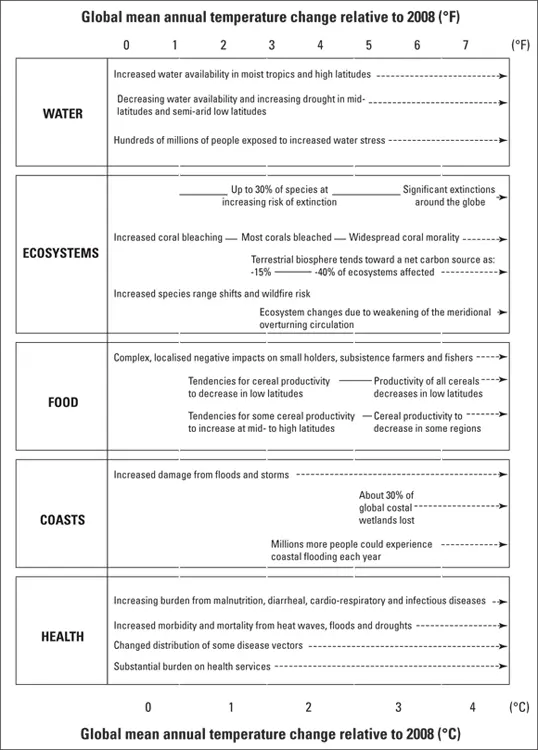
Modified and based on Figure 3.6. Climate Change 2007: Synthesis Report. Fourth Assessment Report. IPCC. Cambridge University Press.
FIGURE 3-4:Effects from climate change will intensify as temperatures rise.
Deep emissions reductions are humanity’s best choice because it’s the safest route to take. Some argue that such cuts will be too disruptive to the economy. (We consider ways that governments can help lower emissions in Part 4, and in Part 5, we look at how businesses and individuals can cut back on emissions.)
The IPCC recommends reducing carbon emissions to net zero by 2050, on top of cutting them in half by 2030. Many countries and groups have committed to an aggressive 2050 goal independently, including the European Union, California, and the World Mayors Council. (See Chapter 10for solutions being implemented by governments around the world.)
 The main reason a major reduction in GHG emissions is so important is because a chance exists that the planet’s climate situation could get worse than predicted. For example, the Earth is experiencing changes that speed up the warming cycle because of positive feedback loops (see Chapter 7to find out about these feedback loops), or because parts of the carbon cycle are weakening because of increasing temperatures, meaning that not as much carbon is being sucked up by carbon sinks such as forests and oceans — leaving humans to deal with more emissions than expected. (The precautionary principle, which we talk about in the section, “ Going, going, gone … The tipping point,” earlier in this chapter, looks more appealing by the day!)
The main reason a major reduction in GHG emissions is so important is because a chance exists that the planet’s climate situation could get worse than predicted. For example, the Earth is experiencing changes that speed up the warming cycle because of positive feedback loops (see Chapter 7to find out about these feedback loops), or because parts of the carbon cycle are weakening because of increasing temperatures, meaning that not as much carbon is being sucked up by carbon sinks such as forests and oceans — leaving humans to deal with more emissions than expected. (The precautionary principle, which we talk about in the section, “ Going, going, gone … The tipping point,” earlier in this chapter, looks more appealing by the day!)
Humanity needs to remember that we don’t start with a clean slate every year. We carry a burden from the history of burning fossil fuels. Every time a person drives an internal combustion vehicle, for example, they release carbon dioxide that will act as a force for global warming for the next 100 years.
The global climate system has long lag times. The atmosphere doesn’t turn on a dime. The damage humanity does today will have an effect over a century. If people keep on with business as usual, we run a real risk of losing a functional civilization. We have to stay positive and work to move governments and industry — and all of us — to push for the changes that need to be made.
Part 2
IN THIS PART …
Of the many factors causing climate change recognize one substantial source of greenhouse gases stands out: fossil fuels. Explore where fossil fuels come from and why they’re causing so much trouble.
Look more closely at how major industries, from manufacturing to logging to farming, are contributing to climate change.
Examine how everyone is unwittingly contributing to the problem.
Chapter 4
Living in the Dark Ages of Fossil Fuels
IN THIS CHAPTER
 Investigating where energy comes from
Investigating where energy comes from
 Recognizing the differences between coal, oil, and natural gas
Recognizing the differences between coal, oil, and natural gas
 Connecting the dots between population growth, economic expansion, and climate change
Connecting the dots between population growth, economic expansion, and climate change
Depending on where you live, you may be able to meet your energy needs without fossil fuels. For the last 150 years, that wasn’t the case. People, especially in industrialized wealthy countries, met most of their energy needs by burning fossil fuels, such as coal, oil, and natural gas.
Burning these fossil fuels released large amounts of greenhouse gases (GHGs) (we talk about those gases in Chapter 2). In fact, a little more than two-thirds of human-produced GHGs in the atmosphere come directly from burning fossil fuels. In this chapter, we examine the types of fossil fuels, look at how people use them in their day-to-day lives, and assess fossil fuels’ overall contribution to climate change.
From Fossils to Fuel — How Fossil Fuels Came to Be
A lot of people know that fossil fuels pollute and produce carbon, but they don’t understand why. To understand that, you need to know where fossil fuels, such as coal, oil, and natural gas, come from. They’re literally derived from fossils of past living matter.
Talk about fossils, and the first things that may come to mind are dinosaurs. But when it comes to the fossils in fossil fuels, they’re actually fossils from before the time of the dinosaurs — starting off as decomposing plant material (not decomposing dinosaurs).
Many of these plants grew in swamps that used to cover even the northernmost parts of the globe 300 to 400 million years ago. Usually, plants and trees rot away into the soil, but swamps don’t have enough air (it’s what scientists call an anaerobic environment ) for the usual decomposition process to happen. Instead, over time, these dead plants and trees sank to the bottom of the swamps where they eventually turned into peat. The peat was buried and compressed under layers of sediments such as sand and silt. As these sediments turned into rock, more pressure was piled on the peat below it. The moisture was squeezed out of the peat like water squeezed out of a sponge, turning the peat to fossil fuels. So, millions of years later, fossil fuels are typically found deep underground.
Similar fossil fuels are also found under the ocean, where sea plants and old shells were buried and pressed down under the ocean sediment. See Figure 4-1 to get an idea of what this process looked like.
Not all plant matter in those ancient swamps and in the oceans turned into fossil fuels. The process needed the right conditions, such as enough pressure and the correct bacteria. Although many of these plants were very different from anything known about today, they sucked up carbon dioxide from the atmosphere and gave off oxygen, like all plants still do.
Читать дальше
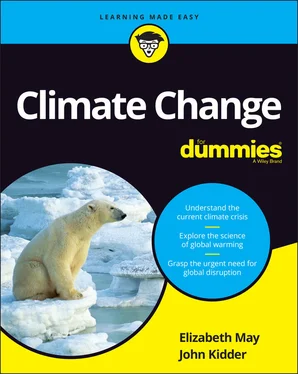

 The main reason a major reduction in GHG emissions is so important is because a chance exists that the planet’s climate situation could get worse than predicted. For example, the Earth is experiencing changes that speed up the warming cycle because of positive feedback loops (see Chapter 7to find out about these feedback loops), or because parts of the carbon cycle are weakening because of increasing temperatures, meaning that not as much carbon is being sucked up by carbon sinks such as forests and oceans — leaving humans to deal with more emissions than expected. (The precautionary principle, which we talk about in the section, “ Going, going, gone … The tipping point,” earlier in this chapter, looks more appealing by the day!)
The main reason a major reduction in GHG emissions is so important is because a chance exists that the planet’s climate situation could get worse than predicted. For example, the Earth is experiencing changes that speed up the warming cycle because of positive feedback loops (see Chapter 7to find out about these feedback loops), or because parts of the carbon cycle are weakening because of increasing temperatures, meaning that not as much carbon is being sucked up by carbon sinks such as forests and oceans — leaving humans to deal with more emissions than expected. (The precautionary principle, which we talk about in the section, “ Going, going, gone … The tipping point,” earlier in this chapter, looks more appealing by the day!) Investigating where energy comes from
Investigating where energy comes from